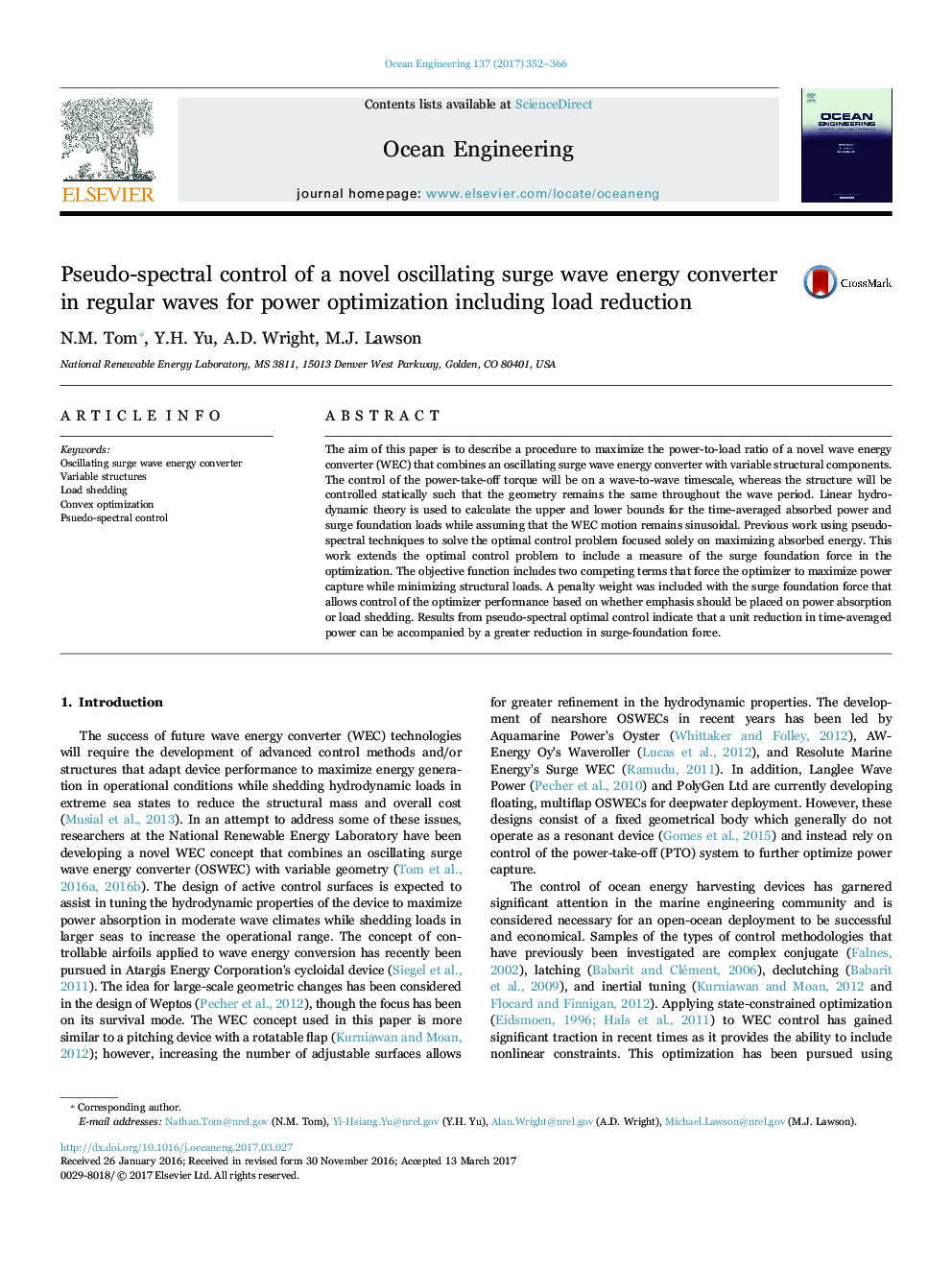| Article ID | Journal | Published Year | Pages | File Type |
|---|---|---|---|---|
| 5474258 | Ocean Engineering | 2017 | 15 Pages |
Abstract
The aim of this paper is to describe a procedure to maximize the power-to-load ratio of a novel wave energy converter (WEC) that combines an oscillating surge wave energy converter with variable structural components. The control of the power-take-off torque will be on a wave-to-wave timescale, whereas the structure will be controlled statically such that the geometry remains the same throughout the wave period. Linear hydrodynamic theory is used to calculate the upper and lower bounds for the time-averaged absorbed power and surge foundation loads while assuming that the WEC motion remains sinusoidal. Previous work using pseudo-spectral techniques to solve the optimal control problem focused solely on maximizing absorbed energy. This work extends the optimal control problem to include a measure of the surge foundation force in the optimization. The objective function includes two competing terms that force the optimizer to maximize power capture while minimizing structural loads. A penalty weight was included with the surge foundation force that allows control of the optimizer performance based on whether emphasis should be placed on power absorption or load shedding. Results from pseudo-spectral optimal control indicate that a unit reduction in time-averaged power can be accompanied by a greater reduction in surge-foundation force.
Related Topics
Physical Sciences and Engineering
Engineering
Ocean Engineering
Authors
N.M. Tom, Y.H. Yu, A.D. Wright, M.J. Lawson,
